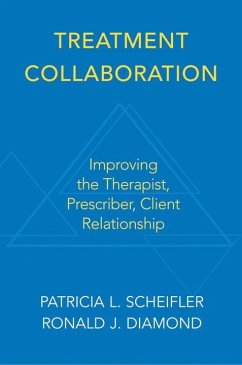A guiding principle is that collaboration, rather than coercion, is most likely to promote, achieve, and sustain recovery. Diamond and Scheifler discuss the often-competing agendas of these groups of people: "what does everyone want out of this relationship" and "how can we make these relationships easier and more beneficial for the client?" The book will also speak to each group of readers, explaining how they can participate more effectively in the process. For example, what questions should a therapist be asking of the psychiatrist; how is the best way to communicate? What is the best way to forge a strong relationship? What should the consumer do to make sure that she is getting the best treatment? Important topics addressed include: how to set goals with clients so that everyone is on the same page with the treatment regimen; how to manage inevitable conflicts that will arise; helping clients deal with medication side effects; working with clients to choose when medication is changed; how to focus on recovery as a goal and not just medication management.








